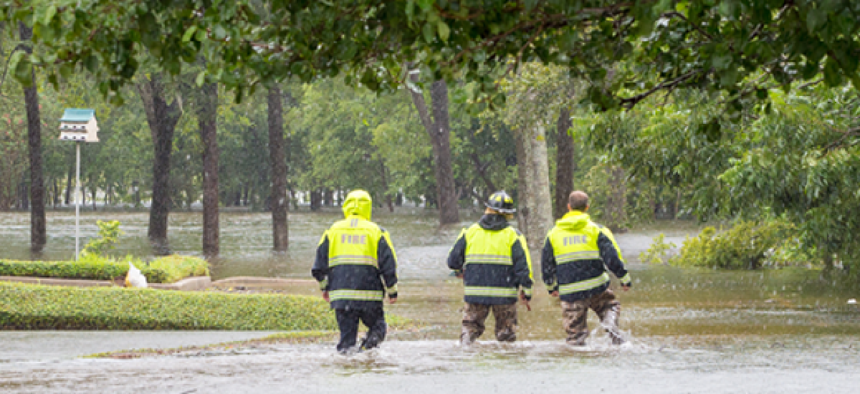Visualizations highlight gaps in incident response preparedness

The New York State Division of Homeland Security and Emergency Services' color-coded maps give officials a quick sense of the major risks across the state or where capabilities are low.
After capturing tens of thousands of data points through a standardized readiness assessment, the New York State Division of Homeland Security and Emergency Services (NYS DHSES) is now using visualizations to highlight gaps in incident response preparedness.
“Just having a spreadsheet is one thing, but being able to visualize, where you can clearly see trends and see issues based on that visualization, is really powerful for us,” said Terry Hastings, senior policy advisor at NYS DHSES.
The division uses a software tool from Tableau, which automatically ingests data that DHSES employees manually collect and enter during workshops held with the state’s 58 counties and New York City every three years. During those meetings, the staff uses the County Emergency Preparedness Assessment (CEPA) to ask county and city law enforcement, public health, IT, fire and emergency medical services personnel standardized questions about their capabilities, issues they face and their risk profile, including how to quantify their specific threats and hazards.
The CEPA data visualization tool also includes Census Bureau and Federal Emergency Management Agency data.
“With any data visualization tool, you’re able to layer numerous datasets into one dashboard-based view. That’s what we’ve done,” said Pat Campion, policy and program analyst at NYS DHSES. “We’ve taken the different data from the risk assessment, from the capability assessment and then layered it over a map using red, yellow, green coloring mechanisms to give people a quick sense of the major risks across the state or where we’re low in capabilities. So, in just a few seconds, you can sort and filter through numerous amounts of data that would take hours to do through a spreadsheet alone.”
Each county and New York City receives a report in the form of a password-protected PDF that they can then use for planning and to inform programs. The division produces state-level reports, too, to get a broader picture of areas in need of assistance in emergency planning.
The division can view the data, which it stores and manages, in real time, as well, so if a storm is approaching, for example, DHSES officials can see what areas might lack swift water rescue capabilities.
“I think the novelty here is it’s a structured way that we have that conversation,” Hastings said. In “some cases jurisdictions have a lot of resources, some have limited resources. We try to understand that with some degree of fidelity, and then we also make time to talk about what is working, some best practices that are happening locally, and some areas we want to work on.”
One gap that the division has identified and worked to fill since conducting assessments in 2014 and 2017 involves mass fatality management.
“Those events are rare, relatively speaking, so a lot of counties just haven’t developed a great deal of capacity there,” Hastings said. “We’re working to create some additional planning guidance for our local emergency management partners, and we’re conducting a series a trainings and exercises all focused on mass fatality management so we can raise the collective level of readiness in that specific area.”
Other areas that identified as in need of support include continuity of operations and citizen and community preparedness. In response, DHSES is working to increase training and strategize on planning.
CEPA also helped the division understand jurisdictions' cyber risks, their limited ability to address them and the lack of grant funding going toward cybersecurity. As a result, the division established a cybersecurity grant program to address local cyber risk identified through the CEPA process.
CEPA was launched after New York Gov. Andrew Cuomo challenged the agency about six years ago to come up with a systematic way to understand preparedness. After conducting the two assessments, DHSES added data visualizations to make it easier to see results. The next assessment will take place next year.
“We deal with a lot of disasters and we obviously learn lessons from each one of those and we know what worked and didn’t work,” Hastings said. “We’ve got a pretty good rapport with our state and local counterparts, so we understood things anecdotally pretty well, but what we didn’t have … was a systematic way to look at preparedness across the state. That’s really where CEPA came in.”





